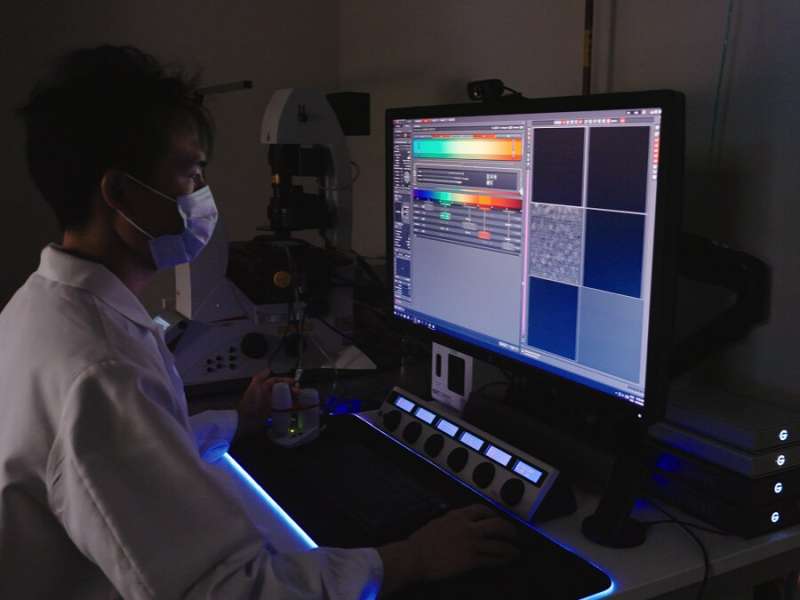This article has been reviewed according to Science X's editorial process and policies. Editors have highlighted the following attributes while ensuring the content's credibility:
fact-checked
peer-reviewed publication
trusted source
proofread
Protein-based nano-computer evolves in its ability to influence cell behavior

The first protein-based nano-computing agent that functions as a circuit has been created by Penn State researchers. The milestone puts them one step closer to developing next-generation cell-based therapies to treat diseases like diabetes and cancer.
Traditional synthetic biology approaches for cell-based therapies, such as ones that destroy cancer cells or encourage tissue regeneration after injury, rely on the expression or suppression of proteins that produce a desired action within a cell. This approach can take time (for proteins to be expressed and degrade) and cost cellular energy in the process. A team of Penn State College of Medicine and Huck Institutes of the Life Sciences researchers are taking a different approach.
"We're engineering proteins that directly produce a desired action," said Nikolay Dokholyan, G. Thomas Passananti Professor and vice chair for research in the Department of Pharmacology. "Our protein-based devices or nano-computing agents respond directly to stimuli (inputs) and then produce a desired action (outputs)."
In a study published in Science Advances, Dokholyan and bioinformatics and genomics doctoral student Jiaxing Chen describe their approach to creating their nano-computing agent. They engineered a target protein by integrating two sensor domains, or areas that respond to stimuli. In this case, the target protein responds to light and a drug called rapamycin by adjusting its orientation, or position in space.
To test their design, the team introduced their engineered protein into live cells in culture. By exposing the cultured cells to the stimuli, they used equipment to measure changes in cellular orientation after cells were exposed to the sensor domains' stimuli.

Previously, their nano-computing agent required two inputs to produce one output. Now, Chen says there are two possible outputs and the output depends on which order the inputs are received. If rapamycin is detected first, followed by light, the cell will adopt one angle of cell orientation, but if the stimuli are received in a reverse order, then the cell adopts a different orientation angle. Chen says this experimental proof-of-concept opens the door for the development of more complex nano-computing agents.
"Theoretically, the more inputs you embed into a nano-computing agent, the more potential outcomes that could result from different combinations," Chen said. "Potential inputs could include physical or chemical stimuli and outputs could include changes in cellular behaviors, such as cell direction, migration, modifying gene expression and immune cell cytotoxicity against cancer cells."
The team plans to further develop their nano-computing agents and experiment with different applications of the technology. Dokholyan, a researcher with Penn State Cancer Institute and Penn State Neuroscience Institute, said their concept could someday form the basis of the next-generation cell-based therapies for various diseases, such as autoimmune diseases, viral infections, diabetes, nerve injury and cancer.
Yashavantha Vishweshwaraiah, Richard Mailman and Erdem Tabdanov of Penn State College of Medicine also contributed to this research.
More information: Jiaxing Chen et al, A noncommutative combinatorial protein logic circuit controls cell orientation in nanoenvironments, Science Advances (2023). DOI: 10.1126/sciadv.adg1062. www.science.org/doi/10.1126/sciadv.adg1062
Journal information: Science Advances
Provided by Pennsylvania State University





















